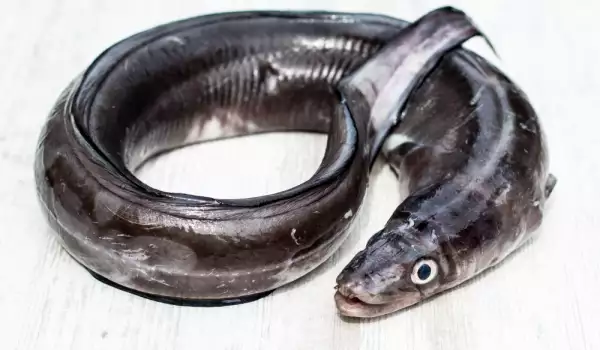The order Anguilliformes consists of 4 suborders, 20 families, 111 genera and about 800 species of eels. Freshwater eels belong to the Anguillidae family, with all 19 species and 6 subspecies being in the Anguilla genus. A total of 4 species are economically significant - the American eel, Japanese eel, European eel and short-finned eel.
All species of eel have an elongated serpentine body. Eels have dorsal and ventral fins, with the dorsal and anal fin merging into the tail fin. Body length varies. Eels inhabit the tropic, subtropic and temperate regions of both hemispheres, excluding the South Atlantic Ocean.
Eels spend the majority of their life in freshwater basins but breed in salty ocean waters, going on very long migrations to do this. The complex reproductive migration of eels is related to severe ecological changes, habitat changes and various physiological tendencies. All of these changes are determined by a complex life cycle and metamorphosis.
When talking about eels, there is no way not to mention the Japanese eel, which is an important economic powerhouse in the eastern parts of Asia and is raised in artificial aquacultures in numerous countries of the region. In Japan, they call the eel "unagi" and it is a crucial element of Japanese food culture. 70% of the world's eel catch is imported to Japan for food. In Kyoto alone, there are over 100 restaurants that serve specially prepared eel. In mid-summer, they celebrate Eel Day.
Catching Eel
Eels are typically nocturnal and predatory fish. They are caught from early spring, when the water temperature rises to 50°F (10°C), to the fall cooling. The majority of eels are sought at the bottom, near shelters, and at night - in the shallow areas. The main fishing line thickness needs to be 0.3 mm, with #6 fishing hooks. The bait is most often a worm, small fish or frog.

Eels bite most actively after sunset, when they come out to the shallows to chase small fish. Typically, an eel bites slowly and cautiously, which is why you shouldn't wait too long to reel it in and because it swallows the hook deep. Once hooked, it twists a lot and often tangles the line.
Cooking Eel
Eels are some of the most delicious fish. The 1st thing that needs to be done when cooking eel is to skin it. Hang it up by its head to dangle, cut off the skin around the head, make a slight incision down its body length and pull the skin down toward the tail. Then gut and clean it.
As mentioned, the eel is of prime significance to the food culture in Japan. During Eel Day, the Japanese prepare it on the grill masterfully and add sauces. This type of dish is called "Kabayaki".
Usually, eel livers are made into soup, while the meat is put into salads and other dishes. The skinned flesh of the eel is dried and made into a souvenir - often into something familiar and is then served to the customer as a keepsake of the exotic dish that they have tasted.
In other parts of the world, eel is generally roasted or fried. The meat is scrumptious, fatty and without any bones. It can be sauteed in red wine but is often smoked or marinated.
Here is a delightful recipe for eel with parsley.
Ingredients: 1 eel, 1 cup of white wine, finely chopped parsley, black pepper and salt.

Preparation: Clean the eel and cut it to pieces. Salt it and let it sit for a while. Then dry them and arrange them in a pan. Sprinkle with black pepper and finely chopped parsley. Pour in the white wine and saute on medium heat, turning the pieces over periodically. Oil is not required because the eel releases plenty of its own.
Another interesting method of eel preparation can be seen in England. To make the famous English jellied eels, first they are caught in the mouth of the river Thames, boiled with allspice and salt and left to cool, then covered with a thick layer of slimy jelly, seasoned with spicy vinegar. The dish does not look particularly pleasant but is considered one of the symbols of the English capital of London.
Benefits of Eel
Eel meat contains 15% protein, 30% healthy fats and a serious complex of minerals and vitamins. Eel is an excellent source of vitamins А, В1, В2, Е and D. A fun fact is that eels in Japan are sought more and more with the approaching summer months. This is because its meat helps overcome heat exhaustion.
Fish oil, abundant in eel, is a superb preventative measure against the development of cardiovascular diseases. Besides essential fatty acids, eels are rich in sodium, potassium and omega-3.
They are also an abundant source of many vitamins - А, В1, В2, В3, В5, В6, folic acid, vitamin B12, vitamin C, vitamin E and D, vitamin B4. Among the macronutrients, calcium, potassium, magnesium, sodium and phosphorus are most well represented. The microelements found in eel are iron, zinc, selenium, copper.
Thanks to all of its beneficial properties, eel meat lowers cholesterol levels, regulates blood pressure, protects against circulatory system diseases, maintain good eyesight and protects against type II diabetes.
In Japan, the bones, meat and skin of eel are ground into powder, creating a food additive that is widely used in Europe. This additive is recommended for elderly people to rejuvenate the body and energy balance.
















